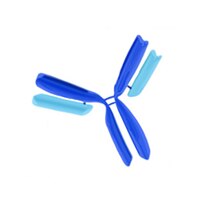IM09L Sigma-AldrichAnti-MMP-9 (Ab-1) Mouse mAb (6-6B)
This Anti-MMP-9 (Ab-1) Mouse mAb (6-6B) is validated for use in Immunoblotting, Immunoprecipitation, Neutralization Studies, Paraffin Sections for the detection of MMP-9 (Ab-1).
More>> This Anti-MMP-9 (Ab-1) Mouse mAb (6-6B) is validated for use in Immunoblotting, Immunoprecipitation, Neutralization Studies, Paraffin Sections for the detection of MMP-9 (Ab-1). Less<<Sinónimos: Anti-Type IV Collagenase, Anti-Gelatinase B, Anti-92 kDa Gelatinase, Anti-Matrix Metalloproteinase 9
Productos recomendados
Descripción
| Replacement Information |
|---|
Tabla espec. clave
| Species Reactivity | Host | Antibody Type |
|---|---|---|
| H | M | Monoclonal Antibody |
| Description | |
|---|---|
| Overview | Recognizes the ~92 kDa latent and the ~83 kDa active forms of MMP-9 under non-reducing conditions, but only the latent form under reducing conditions. Inhibits the enzymatic activity of MMP-9. For paraffin sections, use Cat. No. IM37L. |
| Catalogue Number | IM09L |
| Brand Family | Calbiochem® |
| Synonyms | Anti-Type IV Collagenase, Anti-Gelatinase B, Anti-92 kDa Gelatinase, Anti-Matrix Metalloproteinase 9 |
| Product Information | |
|---|---|
| Declaration | Not available for sale in Japan. |
| Form | Lyophilized |
| Formulation | Lyophilized from a volatile buffer, 100 µg BSA. |
| Positive control | MMP-9 protein (Cat. Nos. PF024 or PF038) |
| Preservative | None |
| Quality Segment | MQ100 |
| Physicochemical Information |
|---|
| Dimensions |
|---|
| Materials Information |
|---|
| Toxicological Information |
|---|
| Safety Information according to GHS |
|---|
| Safety Information |
|---|
| Product Usage Statements |
|---|
| Packaging Information |
|---|
| Transport Information |
|---|
| Supplemental Information |
|---|
| Specifications |
|---|
| Global Trade ITEM Number | |
|---|---|
| Número de referencia | GTIN |
| IM09L | 0 |
Documentation
Anti-MMP-9 (Ab-1) Mouse mAb (6-6B) Certificados de análisis
| Cargo | Número de lote |
|---|---|
| IM09L |
Referencias bibliográficas
| Visión general referencias |
|---|
| Cottam, D.W. and Rees, R.C. 1993. Intl. J. of Oncol. 2, 861. Nakajima, M., et al. 1993. Cancer Res. 53, 5802. Ramos-DeSimone, et al. 1993. Hybridoma. 12, 349. Stetler-Stevenson, W.G., et al. 1993. FASEB. 7, 1434. Zucker, S., et al. 1993. Cancer Res. 53, 140. Woessner, J.F. 1991. FASEB. 5, 2145. Liotta, L.A. and Stetler-Stevenson, W.G. 1990. in Seminars in Cancer Biology, ed. M.M. Gottesman. Vol. 1; 99-106. |







